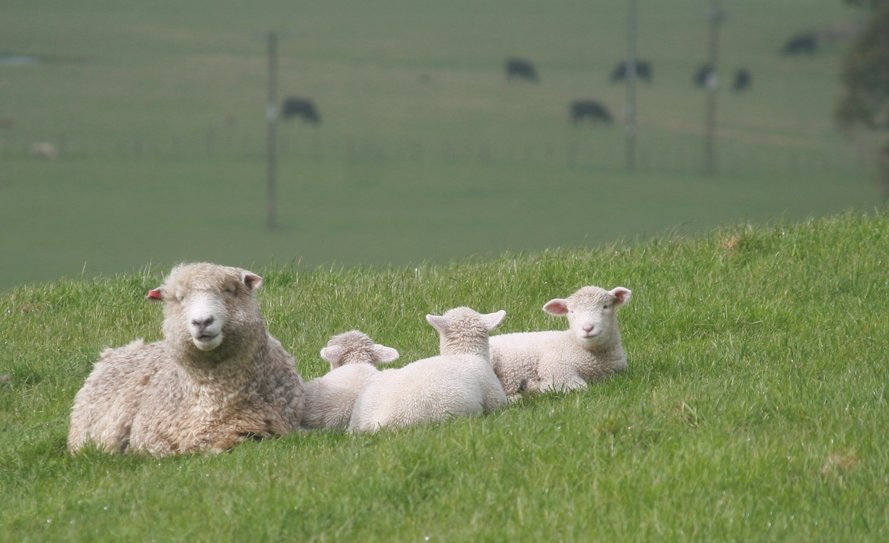Keep it coming – how early grass powers flock productivity

Tyson working its magic on the Central Plateau in September.
Here’s a fast (and timely) fact - about 70% of lamb foetal growth occurs in the last third of ewe pregnancy, or roughly the final 50 days before lambing.
And that means your ewes needs every nutrient-dense mouthful of feed they can get during this time, because their energy requirements go through the roof.
Simultaneously, they’re so full of lamb(s) their rumens are increasingly compressed, which restricts their intake.
In other words, ewes simply cannot eat enough low metabolisable energy feed to meet the demands of late pregnancy, no matter how much is offered to them.
Not only that, they then have to become milking mega-stars as soon as lambs are born.
If they don’t lactate well straight away, because they haven’t been well fed, they can end up producing half as much milk as their flockmates who maintain or gain weight in late pregnancy.
Their lambs may only have 40% of the energy reserves of lambs born to well-fed ewes; birth may be prolonged, mothering ability compromised, and lamb losses increased.
Quality and quantity
All of which helps explain why there is so much emphasis on making sure pasture quality and quantity are on-point in the weeks before and during lambing.
It’s also why we spent years perfecting a diploid perennial ryegrass that starts growing earlier than any other, and outyields everything else by 35% in early spring.
With a heading date of -10 days, Tyson was developed to help fill the typical early spring feed pinch that occurs on most New Zealand red meat farms during lambing and calving.
Despite all the productivity and genetic gains sheep farmers have made in their systems over recent years, this pinch remains a major choke point, directly influencing the number of lambs weaned, the weight of those lambs and ultimately farmgate returns.
In this regard sheep farmers are just like dairy farmers - lactational performance is a key driver of productivity.
Having more grass growing in early spring sets up a cascade of improved outcomes, because grass at this time of the season has the same nutritional value as legumes do later.
Add up the gains
Ewes are better nourished, so they produce more milk.
More milk leads to higher lamb survival rates and faster growth during the time when lambs are most efficient at converting feed to liveweight gain, namely from birth to weaning.
Remember, lambs grow faster on a diet of milk and pasture than at any other time of their lives.
Research shows lamb growth peaks somewhere between day 20 and day 40 of lactation, at an average of 250-300 grams per head, per day.
Rapid early liveweight gain in turn mean you can draft more lambs straight off mum, often for early season premiums.
There’s no growth check to worry about, no drenching or dipping required, and you can free up feed for other animals.
As one Tyson farmer puts it: “Having grass grow under the ewes’ feet is worth everything to us. If you get a pinch, it messes up the whole system. Mum doesn’t milk well, she wanders away from her lambs to look for feed, lambs don’t grow as well. It’s a critical time.”
Tyson has the genetic potential to significantly outgrow any other ryegrass in early spring.
Make it work
But just as high performance ewes need the right management to express their full genetic potential, Tyson needs the right management too.
Like any pasture, it must be set stocked at the recommended cover of 1500 kg DM/ha (or 4 cm) through lambing.
Otherwise it won’t have the leaves to capture enough sunlight to grow to its genetic potential.
The only thing you might have to do differently with Tyson is keep an eye on its growth.
In a mild spring, once soil temperatures are 8oC and rising, it can get away on you, especially if you have set stocked it at the rate you would normally use for normal, slower growing pastures.
This is a good ‘problem’ to have!
And it can be easily managed by adjusting the stocking rate to match the amount of feed being grown.
That way you’ll maintain pasture quality, and keep your ewes and lambs thriving.
For a free, personal Pasture Health Check, contact us today.

